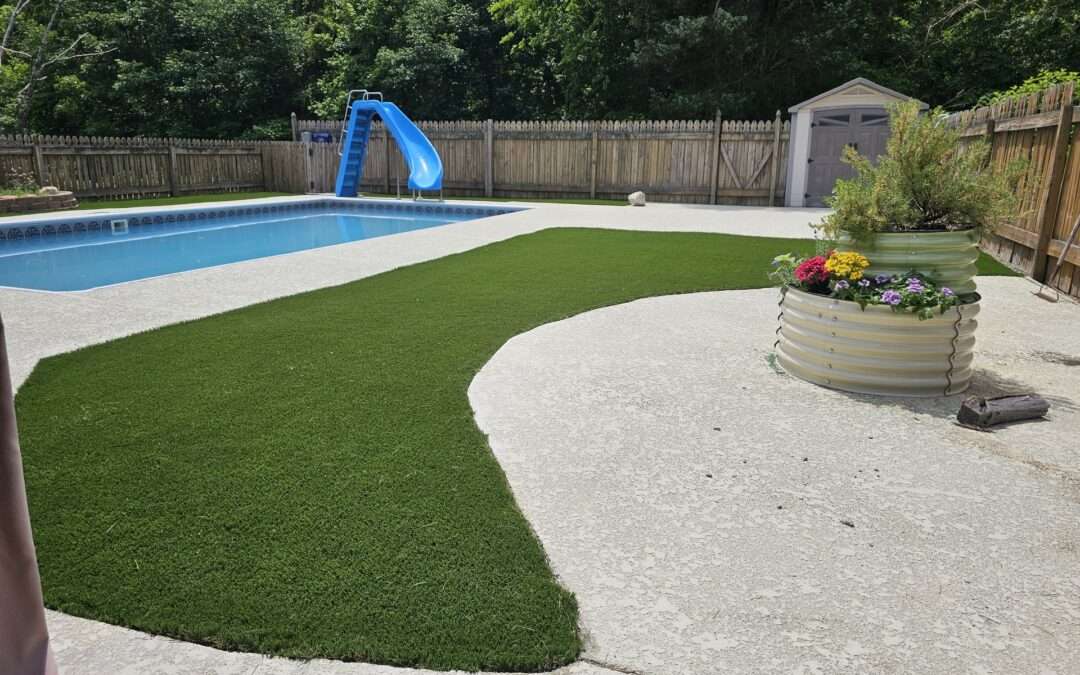When considering artificial turf for your home, sports field, or commercial space, one question often comes up: can it handle extreme weather? From scorching summer heat to freezing winter frost, artificial turf is designed to offer a durable and low-maintenance alternative to natural grass. But how well does it hold up when Mother Nature is at her worst? Let’s dive into how artificial turf performs under the harshest weather conditions.
Artificial Turf: Built to Weather the Storm
Artificial turf has come a long way since its early days. Today’s synthetic grass is engineered to look and feel natural while standing up to the elements. Unlike natural grass, which can struggle to stay lush and functional under extreme weather conditions, artificial turf is built to last.
Here’s how it handles the elements, season by season:
Scorching Summers
Hot summer days can take a toll on natural grass, leaving it dry, brittle, and patchy. Artificial turf, on the other hand, is designed to stay green and vibrant, no matter how high the temperature climbs.
- UV Resistance: Modern artificial turf products come equipped with UV inhibitors that protect the fibers from sun damage. This ensures that the grass retains its color and doesn’t fade, even after years of exposure to direct sunlight.
- Heat Resistance: While artificial turf can get warm under the sun, newer technologies have introduced heat-reducing materials to keep the surface cooler. If the turf becomes too warm, a quick rinse with water can make it more comfortable for children and pets to play on.
- No Watering Needed: Unlike natural grass, artificial turf doesn’t require constant watering to stay healthy during dry spells. This not only saves water but also eliminates the risk of browning or dead patches.
Heavy Rainfall and Flooding
Rain can turn natural grass into a muddy mess, making it unusable for days. Artificial turf, however, is designed to handle wet weather like a pro.
- Exceptional Drainage: The backing of artificial turf features a permeable design that allows rainwater to flow through efficiently. Whether it’s a light drizzle or a heavy downpour, water doesn’t pool on the surface. Instead, it drains away quickly, leaving a clean, dry lawn in no time.
- Mud-Free Surface: Because artificial turf doesn’t rely on soil, you’ll never have to deal with mud tracking into your home after a storm. This makes it especially appealing for families with kids and pets.
Harsh Winters
Winter is a tough season for natural grass. Frost can damage the blades, snow can weigh it down, and dormancy turns it brown. Artificial turf, however, doesn’t miss a beat.
- Snow and Ice Resilience: Artificial grass doesn’t freeze or become brittle in cold weather. Even under layers of snow, the turf retains its structure and appearance. Once the snow melts, your lawn looks as fresh as ever.
- No Dormancy: While natural grass goes dormant and loses its vibrant green color in winter, artificial turf remains lush and beautiful year-round.
- Easy Snow Removal: Clearing snow from artificial turf is simple. Use a plastic shovel or broom to avoid damaging the blades, and you’ll have a functional surface in minutes.
High Winds and Storms
Strong winds and storms can wreak havoc on natural lawns, from uprooted sod to uneven patches caused by erosion. Artificial turf offers a more secure and stable alternative.
- Secure Installation: Artificial turf is installed using adhesives and heavy-duty anchors, ensuring it stays firmly in place even during high winds. Proper edge restraints add an extra layer of security.
- Storm Cleanup: Debris from storms, such as leaves and branches, can be easily removed with a broom or leaf blower. Unlike natural grass, artificial turf doesn’t require reseeding or repair after severe weather.
Additional Benefits in Extreme Conditions
Beyond its ability to withstand harsh weather, artificial turf offers several other advantages that make it a smart choice for challenging climates:
- No Soil Erosion: Heavy rain and wind can cause soil erosion in natural lawns, creating uneven surfaces. Artificial turf eliminates this problem entirely.
- Pest Resistance: Because it doesn’t provide food or shelter for insects and rodents, artificial turf helps reduce pest problems, even in humid or wet climates.
- Durability Over Time: With proper care, artificial turf can last 10–20 years, maintaining its appearance and functionality despite repeated exposure to extreme weather.
Maximizing the Longevity of Your Artificial Turf
While artificial turf is incredibly resilient, a little maintenance goes a long way in keeping it in top condition:
- Regular Cleaning: Remove leaves and debris regularly to prevent buildup.
- Rinse as Needed: In hot weather, rinsing the turf can help cool it down.
- Snow Care: Use a plastic shovel or broom to clear snow without damaging the surface.
- Professional Inspection: Consider an annual check-up to ensure the turf’s installation remains secure and the drainage system functions properly.
Why Artificial Turf Is the Perfect All-Weather Solution
Artificial turf is a true all-weather hero. It thrives in hot, rainy, cold, and windy conditions, maintaining its lush appearance and functionality year-round. Unlike natural grass, which often struggles in extreme climates, artificial turf provides a low-maintenance and reliable solution for both residential and commercial spaces.
At Carolina Turf Systems, we specialize in high-quality artificial turf designed to withstand the harshest conditions. Whether you’re looking to upgrade your lawn, install a pet-friendly play area, or create a sports field that performs rain or shine, we’ve got you covered.
Make the Switch Today
Are you ready to enjoy a beautiful, weather-resistant lawn that looks great every season? Visit Carolina Turf Systems to explore our range of artificial turf products. Contact us today for a consultation, and let’s create the perfect outdoor space for you!

